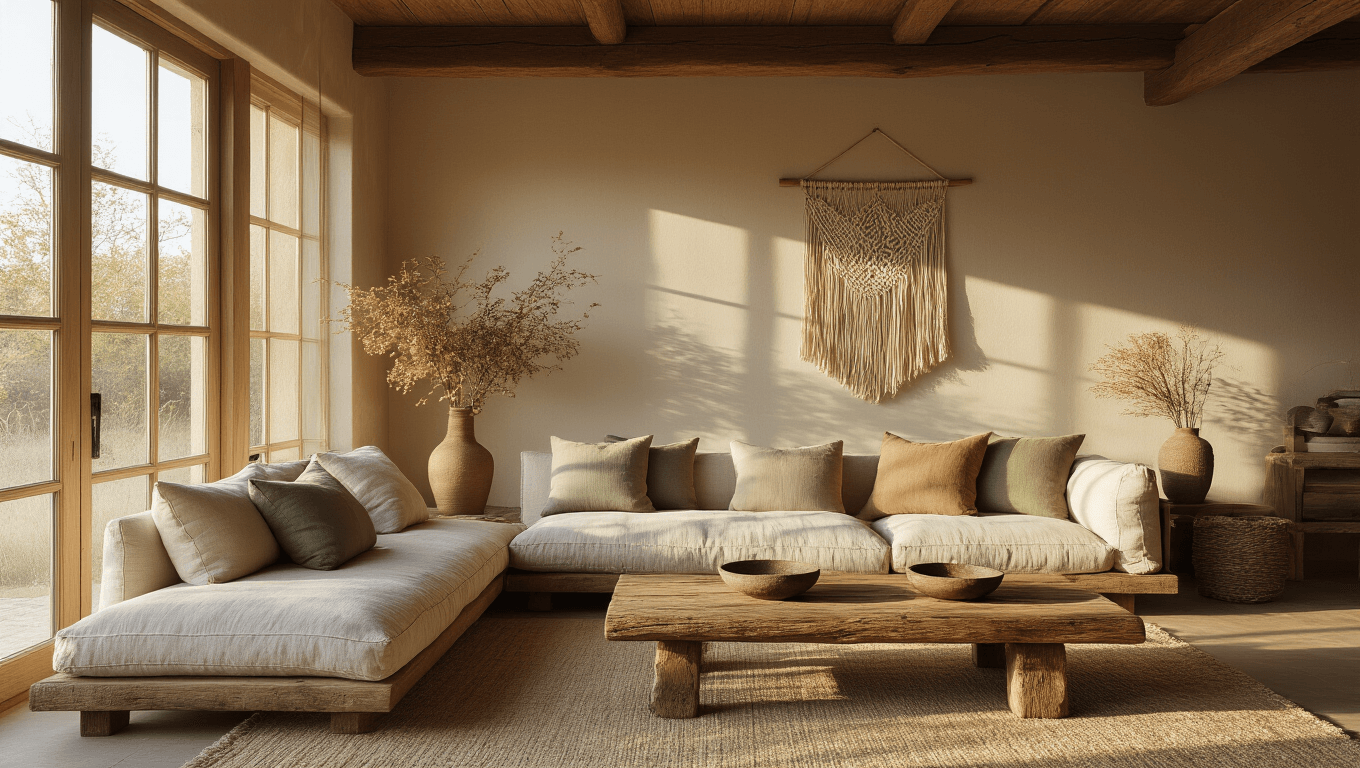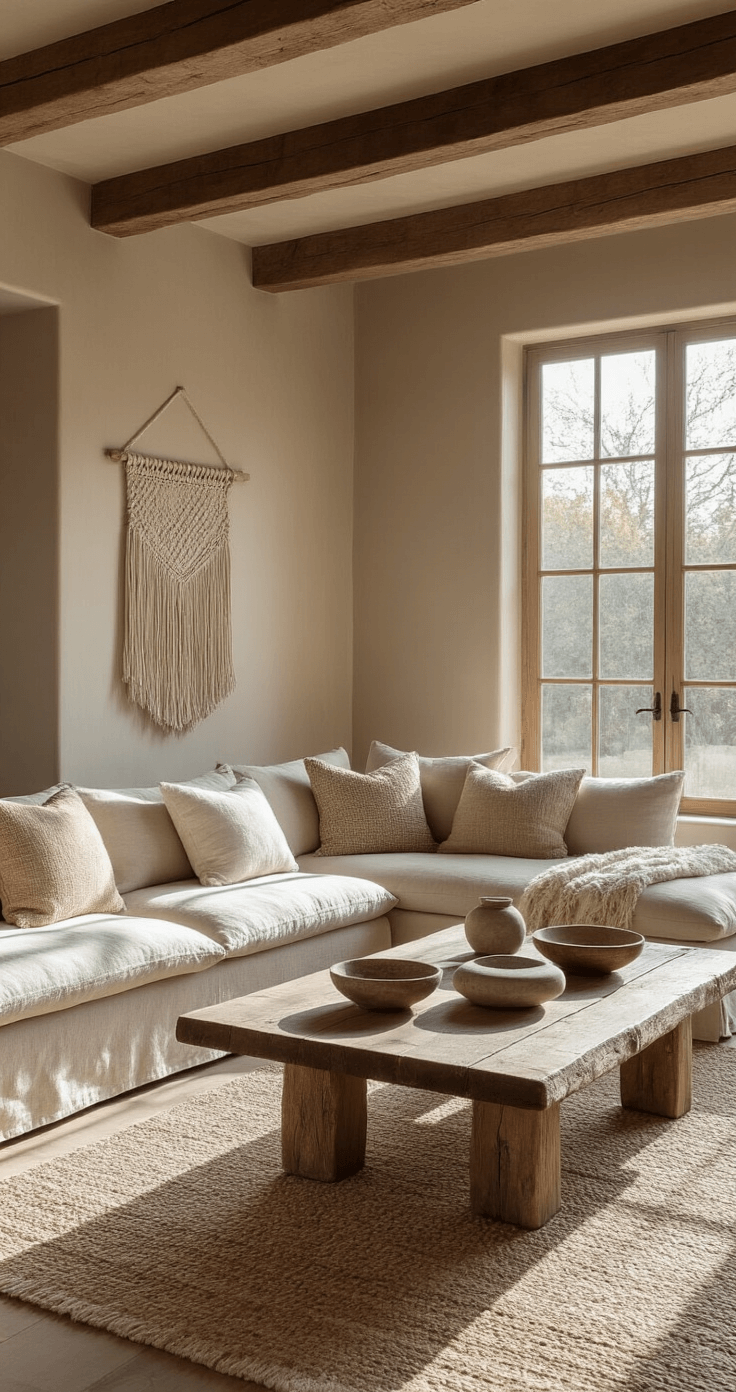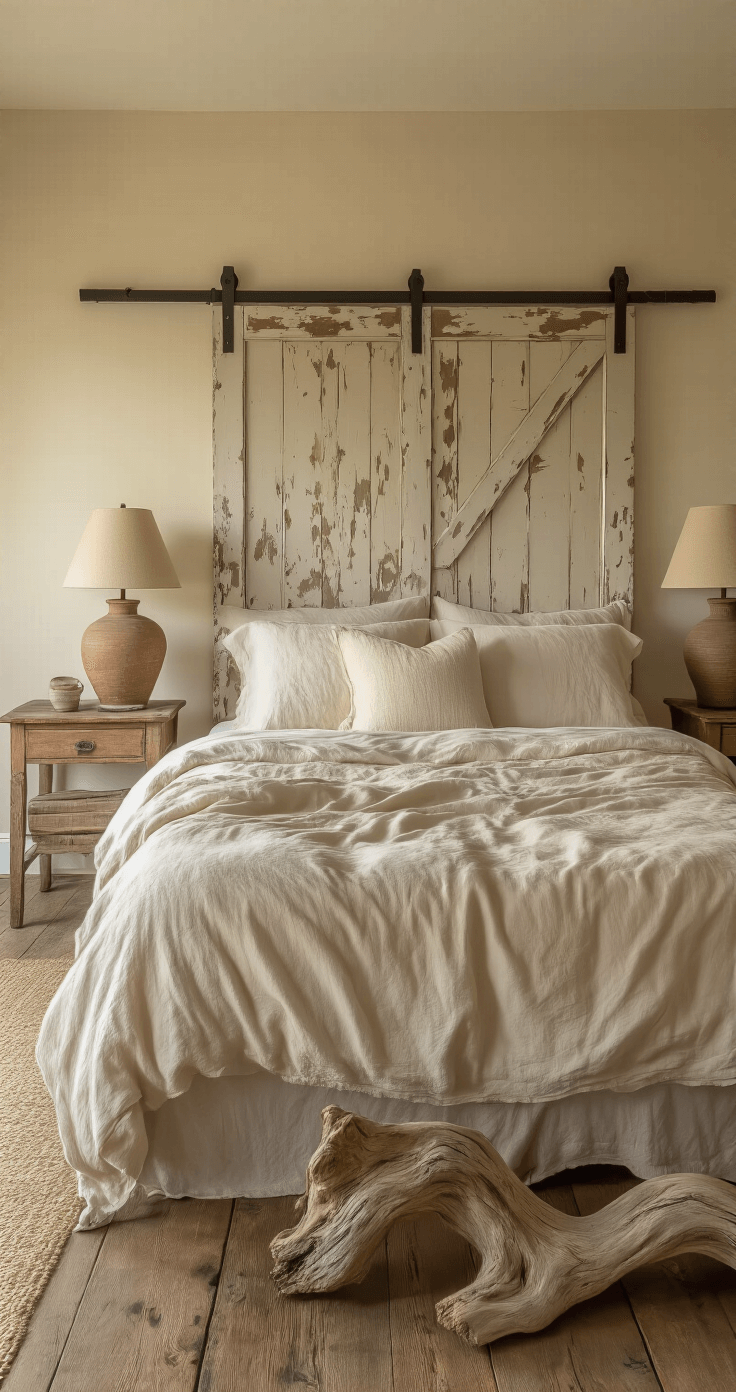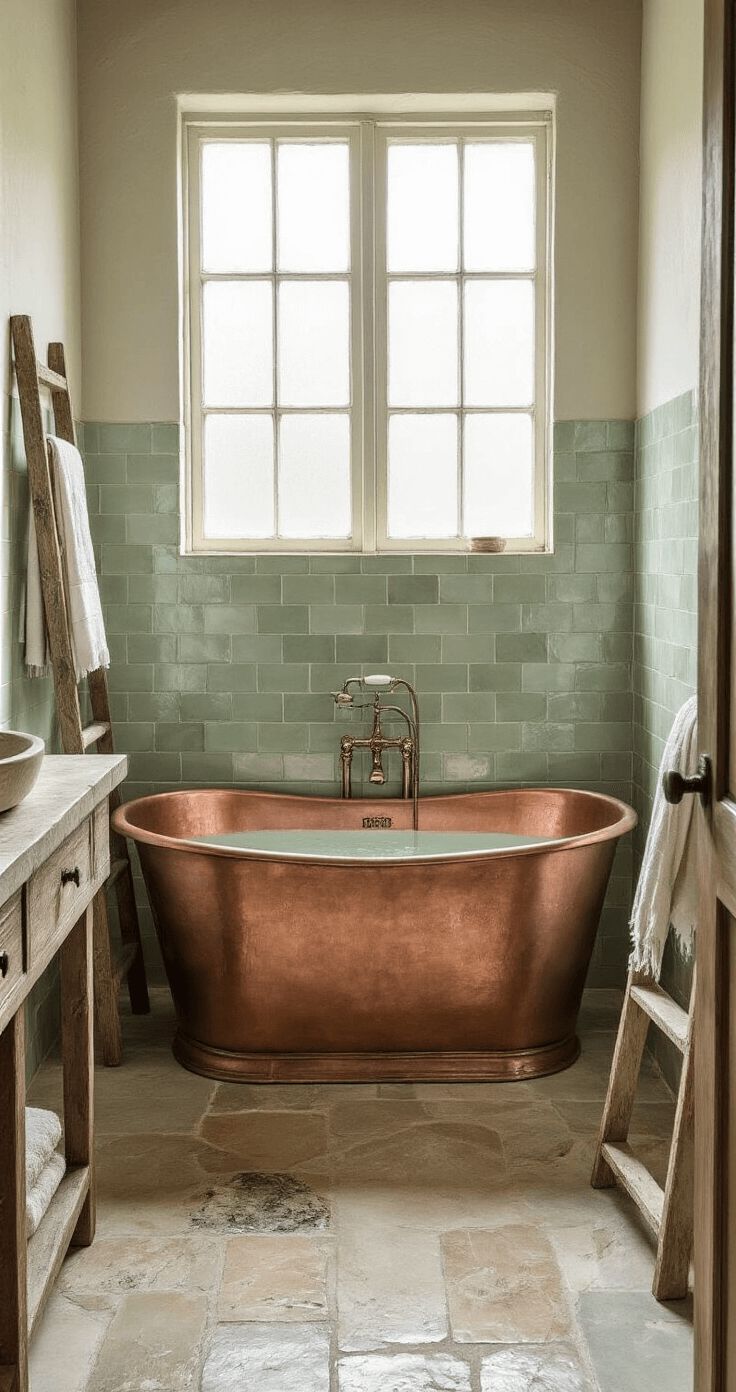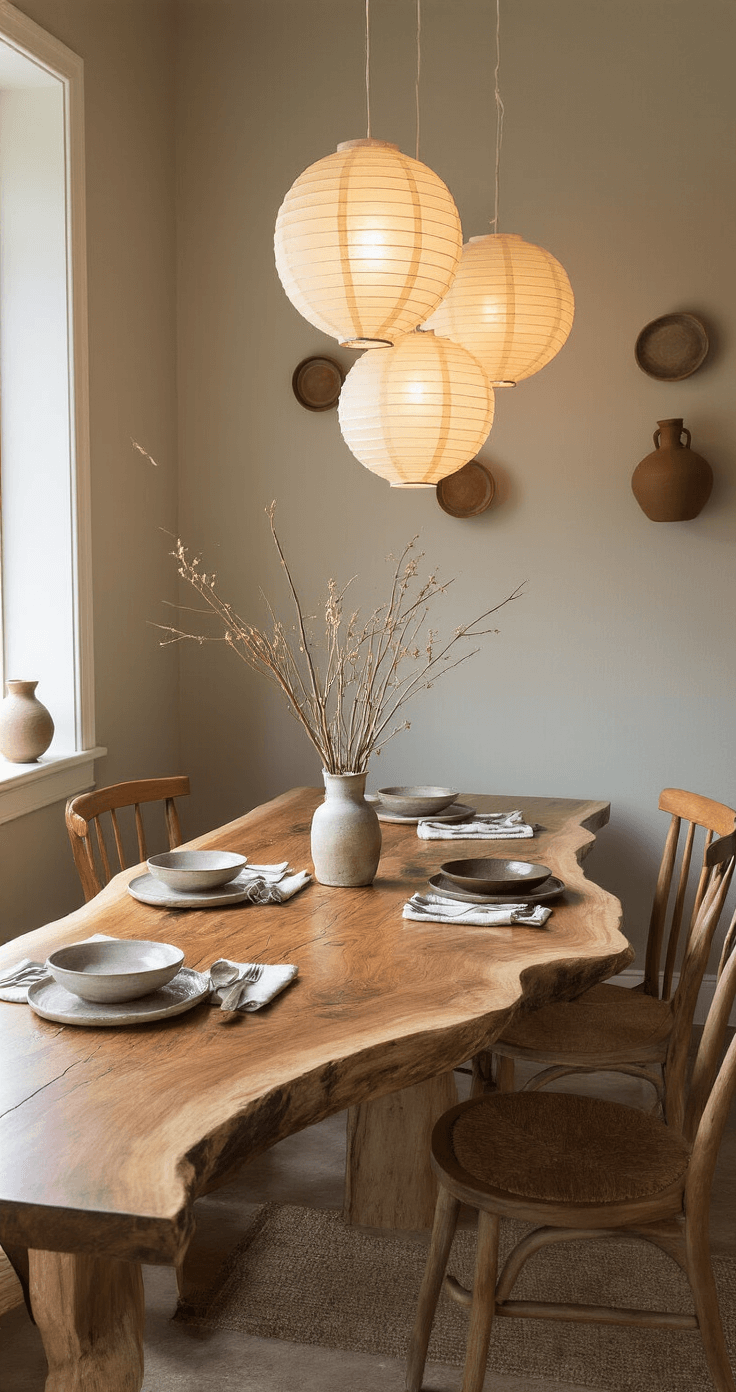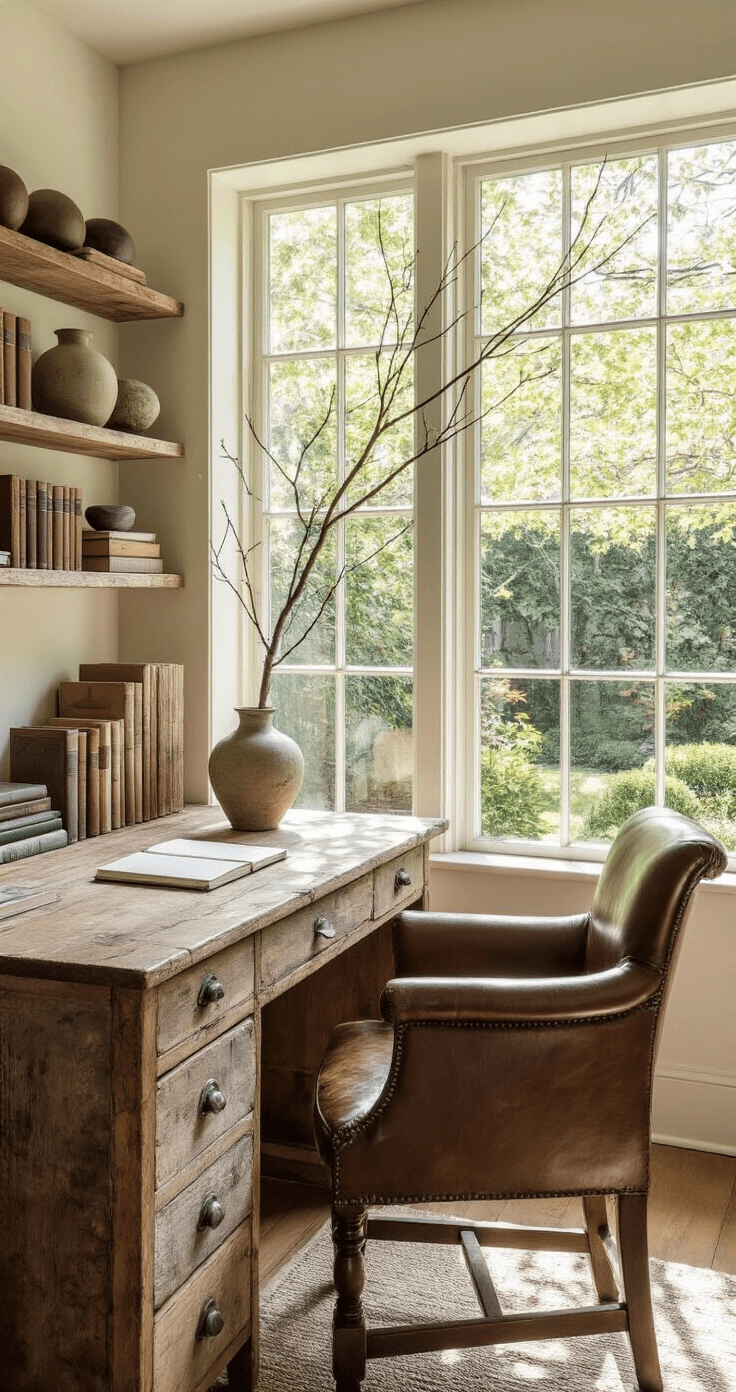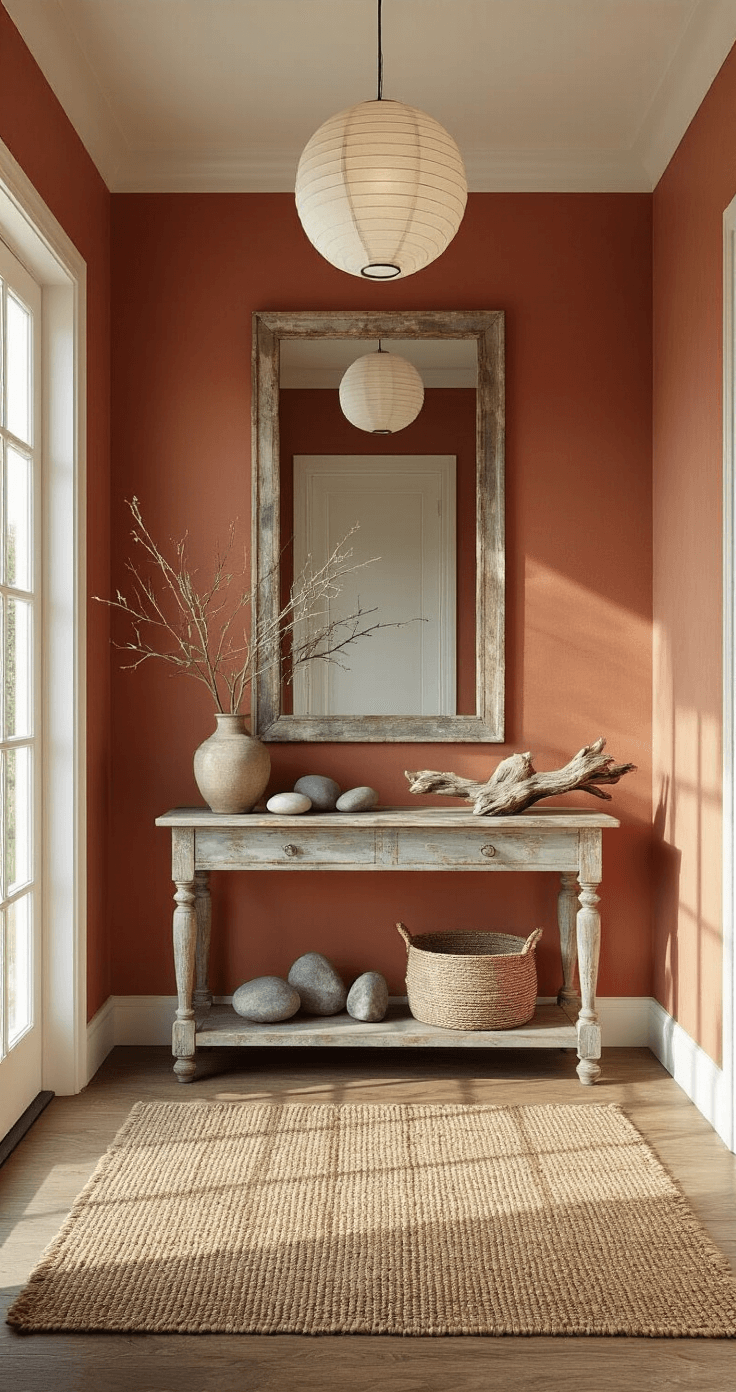This post may contain affiliate links. Please see my disclosure policy for details.
Wabi-Sabi Magic: Embracing Imperfection in Your Home
Contents
- Wabi-Sabi Magic: Embracing Imperfection in Your Home
- 1. Embrace Natural Materials
- 2. Celebrate Imperfections
- 3. Keep It Simple, Sweetie
- 4. Go Earth-Toned and Muted
- 5. Let There Be (Soft) Light
- 6. Bring the Outdoors In
- 7. Upcycle and Repurpose
- 8. Focus on Handmade and Artisanal
- 9. Create Intentional Incompleteness
Hey there, fellow home decorators! Ready to ditch the pressure of perfection and dive into a world where cracks, wrinkles, and weathered finishes are celebrated? Welcome to the wonderful world of wabi-sabi interior design!
I’ll let you in on a little secret: my obsession with wabi-sabi started when I accidentally chipped my favorite ceramic mug. Instead of tossing it, I decided to embrace its new “character.” That tiny imperfection became a daily reminder to slow down and appreciate life’s little quirks.
So, what’s the deal with wabi-sabi anyway?
Wabi-sabi is like that cool Japanese philosophy that gives you permission to chill out about your home decor. It’s all about finding beauty in the imperfect, incomplete, and ever-changing nature of things. Think of it as the anti-Instagram filter for your living space!
Why should you care about wabi-sabi?
- It’s a stress-buster: No more freaking out over every little scratch or dent!
- It’s eco-friendly: Upcycling and reusing are totally on-brand.
- It’s unique: Say goodbye to cookie-cutter interiors and hello to personality.
- It’s budget-friendly: Thrift stores and flea markets become treasure troves.
Ready to wabi-sabi your space? Let’s dive in!
1. Embrace Natural Materials
Ditch the plastic fantastic and go au naturel! Think:
- Weathered wood (the more knots and grain, the better)
- Unglazed ceramics (handmade gets bonus points)
- Raw stone (hello, texture!)
- Organic fabrics like linen and cotton (wrinkles welcome)
Pro tip: Mix and match textures for a feast for the senses. Pair rough stonework with smooth leather, or nubby linen with sleek metal.
2. Celebrate Imperfections
Remember that chipped mug I mentioned? It’s time to give all your slightly damaged goods their moment in the spotlight!
- Display cracked pottery (Google “kintsugi” for some serious inspiration)
- Hang art with visible brushstrokes or “flaws”
- Use furniture with visible wear and tear
- Embrace asymmetry in your arrangements
3. Keep It Simple, Sweetie
Wabi-sabi isn’t about clutter – it’s about curating with intention. Less is definitely more here.
- Choose a few meaningful objects over a sea of knick-knacks
- Leave plenty of negative space to let your items breathe
- Opt for low, minimalist furniture
- Create simple vignettes that tell a story
4. Go Earth-Toned and Muted
Think soothing, natural hues that wouldn’t look out of place in a zen garden.
- Warm beiges and taupes
- Soft greys
- Earthy greens and browns
- Creamy off-whites
Avoid anything too bright or artificially vibrant – we’re going for calm here, not sensory overload!
5. Let There Be (Soft) Light
Harsh overhead lighting is a wabi-sabi no-no. Instead, create a cozy atmosphere with:
- Natural light (leave those windows bare!)
- Warm-toned bulbs
- Candles galore
- Salt lamps
- Paper lanterns
The goal is to create gentle shadows that highlight, rather than hide, imperfections.
6. Bring the Outdoors In
Nature is the ultimate wabi-sabi inspiration, so invite it into your home!
- Display found objects like interesting rocks or driftwood
- Use plants liberally (bonus: they purify the air!)
- Create a mini indoor zen garden
- Hang nature-inspired art
7. Upcycle and Repurpose
Get creative with items that might otherwise end up in the trash:
- Turn old ladders into bookshelves
- Use chipped teacups as planters
- Frame interesting fabric scraps
- Transform wooden crates into side tables
Remember, one person’s trash is another’s wabi-sabi treasure!
8. Focus on Handmade and Artisanal
Mass-produced perfection? No thanks! Seek out items with visible human touch:
- Handwoven baskets
- Pottery thrown on a wheel
- Hand-knitted throws
- Artwork with visible brushstrokes
Bonus: You’re supporting artists and craftspeople!
9. Create Intentional Incompleteness
Leave some things undone or unfinished to spark curiosity and imagination:
- Display an unframed canvas
- Leave some shelves partially empty
- Show off the raw edges of a textile
- Keep some walls intentionally bare

